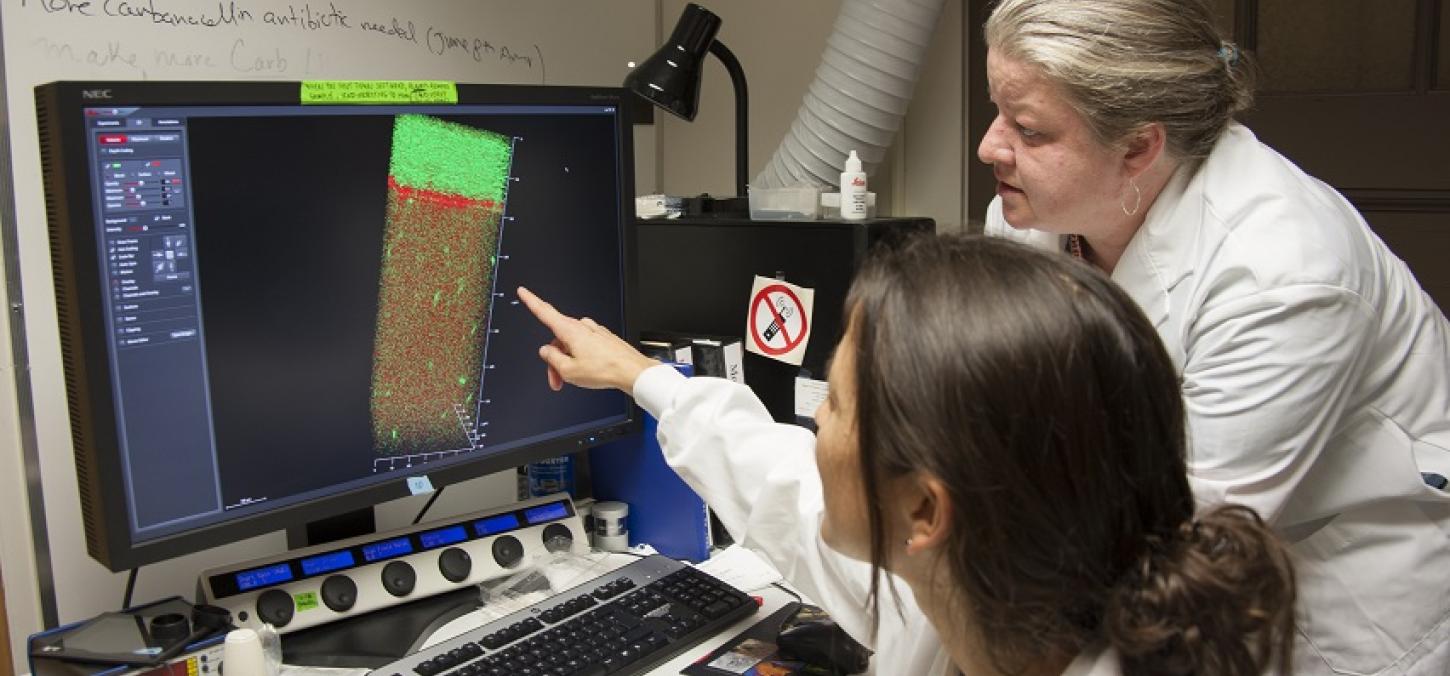
Mapping the blood vessel adhesion mechanisms of Lyme disease bacteria
Associate Professor Tara Moriarty recently received a prestigious five-year Canadian Institutes of Health Research (CIHR) grant for her research on blood vessel adhesion and bacteria, specifically in Lyme disease.
While most bacteria are rendered harmless by the body’s defense mechanisms, to date there has been very little understanding of exactly how bacteria are able to navigate the blood stream to invade organs, where they can cause massive damage and in some cases, death. But Dr. Tara Moriarty and her team are working to shed new light in this area of science.
Dr. Moriarty’s studies are crucial for understanding a deadly, under-investigated and poorly understood step in invasive bacterial infection. They will identify novel molecules and mechanisms supporting dissemination of Lyme disease bacteria to diverse tissues, and may lead to identification of similar dissemination molecules and mechanisms in other pathogens. Cardiovascular dissemination of bacteria is responsible for most infection-related death.
“The basic problem is that with infections, if bacteria enters the blood stream, they can then move quickly to the brain, heart, joints, numerous vital organs – places they should not be going,” said Dr. Moriarty. “Illness, and even death, can then be a real possibility.”
The blood vessels are a type of canal system where the bacteria can travel quickly around the body. But bacteria need to be able to “dock” on blood vessel walls so that they can escape from the bloodstream and migrate into tissues outside blood vessels. How they get out of the blood vessels is not well understood.
Through her work with Lyme disease, Dr. Moriarty is studying what allows bacteria to slow down and dock on the sides of blood vessels. “Lyme disease bacteria spread quickly and easily to most tissues in the body via the bloodstream, and have multiple, diverse ways of sticking to blood vessels," she said. "Since they’re exceptionally good at dissemination, and we don’t know much about dissemination mechanisms of most bacteria, figuring out the different ways Lyme disease bacteria do this could help identify mechanisms that are shared by other bacteria too."
In her previous CIHR and NSERC-funded research, Dr. Moriarty and her team developed powerful, rapid methods for studying dissemination in a more natural environment. The recently-funded CIHR grant will allow them to use these methods to rapidly screen for bacterial, human and mouse molecules supporting dissemination, and to dissect the mechanisms underlying this important disease process. The impact could be far-reaching for health care.
"The study is focused on an important stage in infection for infections in general, not just Lyme disease. We’re currently in the dark,” she said. “This can be lethal – that’s why it is so important to study. This could have an impact in terms of preventing or slowing the most serious consequences of infection.”
Bloodstream infections can kill vulnerable infants and elderly patients, frequently secondary to pneumonia, skin wounds and urinary tract infections. But it can also impact the young and healthy as the result of ‘routine’, or every-day medical procedures, such as child birth.
“Unfortunately, with all our modern scientific and technological advances, the survival rate for some bloodstream infections is still less than 50 per cent,” said Dr. Moriarty. “Not much can be done for a patient once bacteria are in the bloodstream, other than pushing antibiotics and fluids and close medical monitoring."
And bloodstream infection rates are increasing with the emergence of antibiotic-resistant bacteria, which are often lethal. "If we move back to pre-antibiotic times because so many bacteria are resistant, we’ll return to a time when simple infections could kill if not stopped or slowed down early enough," she said. " We need every antibiotic-complementing therapy we can develop to help in treating antibiotic-resistant infections.”
Most often, bacterial infection is invisible. It no longer strikes fear in the hearts of many people in industrialized countries, but it can be very deadly and still kills many people worldwide.
“Although bacterial bloodstream infections are technically hard to study, we have successfully developed methods to approach this problem and believe our strategies will be useful for discovering how they work, and ultimately for identifying strategies for combatting this important health problem.”
As the Government of Canada's health research investment agency, the Canadian Institutes of Health Research (CIHR) supports excellence across all four pillars of health research: biomedical; clinical; health systems services; and population health.